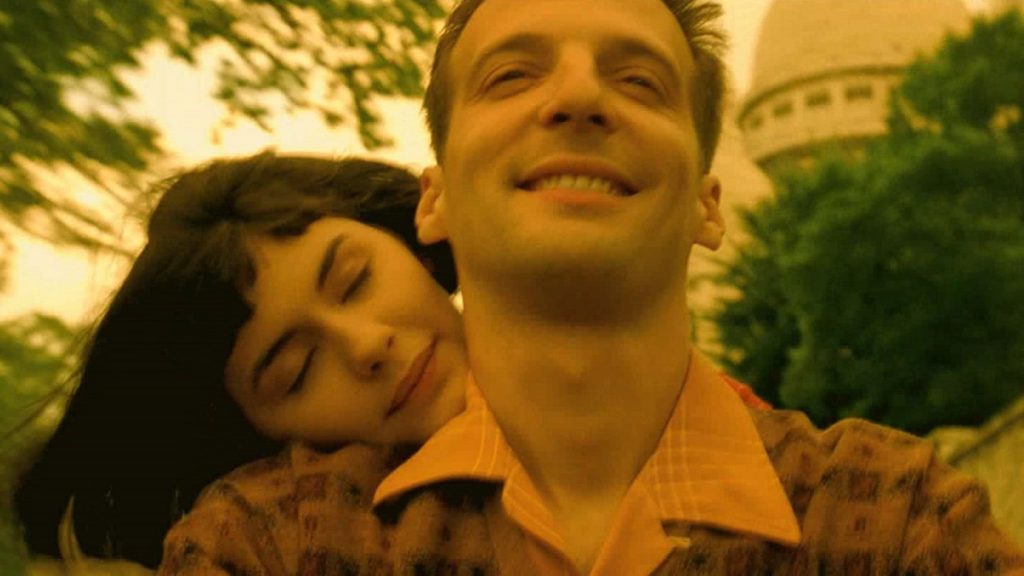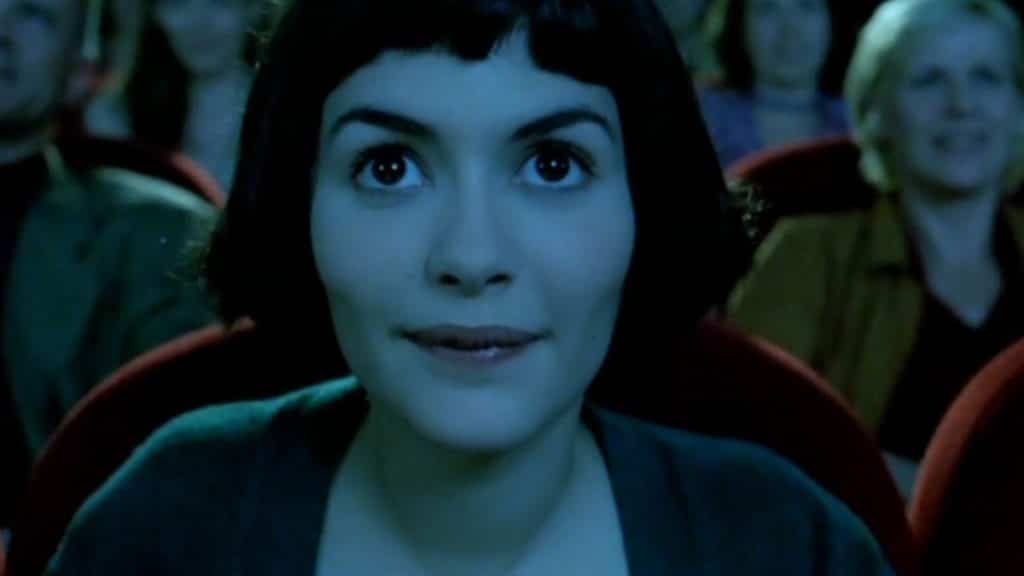Years of jokes and dismissals haven’t diminished the delightful fantasy of their modern French fairy tale.
Twenty years after its sensational release, Jean-Pierre Jeunet’s Amélie has become synonymous with words like “twee” and “whimsy.” Thanks to a popular bit on My Brother, My Brother, and Me, you can’t even mention the film in certain company. Certainly not without risking being audience to a long, dreary recitation of the original McElroy goof by your guy friends who think a movie discussion is some kind of open mic night. But jokesters, cynics, and doubters aside, there’s a reason why 20 years on, Amélie is still considered a masterpiece. More than a modern fairy tale in an Instagram version of Paris, the film remains a tribute to the lonely outcasts, the hopeless romantics, and a celebration of small pleasures.
From the fragile artist to the hypochondriac cigarette seller, the people who occupy Amélie are all living a self-imposed exile of a sort. And yet, despite their best efforts, they find connection and humanity with one another. Not with any sense of permanence, but with the feeling that life is a revolving door of the people and experiences that make up who we are in our most essential selves. It’s that siren song of fitting, of belonging, that still appeals.
Isolated as a child by her chilly parents, young Amélie Poulain (played by Flora Guiet as a child and Audrey Tatou as an adult) builds a rich fantasy life. Alas, all its quirky imagination never quite manages to quell her thirst for true companionship and affection. When her mother dies as a result of someone else’s suicide off of the top of Notre Dame, Amélie and her father (Rufus, no last name) become even more withdrawn. Still, even at a young age, Amélie has a strong sense of right and wrong. Moreover, her moral compass demands acts of cruelty be repaid with mischief.

Amélie’s adult existence isn’t much more exciting. She waits tables in one of Paris’s dreamy little cafes, skips rocks in the canal for fun, and finds dipping her hand into a bag full of lentils as fun as fifteen simultaneous orgasms. That is, until the night of Princess Diana’s death.
The surprise of the news leads to the discovery of a relic hidden in the walls of her apartment. Determined to find the original owner of the little box of childhood memories, Amélie is inspired to become a force for good. This yields mixed results. While her intentions are pure, they’re also a means of hiding herself. In particular, she seems to be dodging the love she so desperately wants from handsome oddball Nino (Mathieu Kassovitz).
Amélie remains a tribute to the lonely outcasts, the hopeless romantics, and a celebration of small pleasures.
As her neighbor Mssr Dufayel (Serge Merlin) slyly deduces, Amélie exists “in the middle, but outside”. She’s always somewhere else no matter where she goes. For Amélie, breaking out of the bubble she’s lived in her entire life is no easy feat. The fragile Dufayel has had a lifetime to adjust to isolation, sees the road on which his young neighbor walks. “Times are hard for dreamers,” another character tells Amélie. It’s a sentiment that remains as true today as in 2001 when it felt like the world could end at any moment.
It isn’t just the exposure of vulnerability that Amélie fears, but that the reality will never come close to the idea of Nino she’s dreamt up in her head. In the end, this makes the movie about accepting the reality and the fantasy; letting magic happen in the quiet moments and small gestures that make up everyday life.

What makes Amélie such a treat is its cast of misfits, its fantastical and timeless version of Paris, and the golden and green palette, its exuberant use of red as shorthand for love and the desire for love. Amélie lives in an apartment so red it looks like the interior of a heart, while her cruel neighbor Collignon’s (Urbain Cancelier) space is so green it might as well be Shrek’s swamp. It may be unsubtle, but the soft lighting and generous splashes of red lend themselves to the idea that this is a fantasy, a story that begins with a lonely girl and ends with new love.
No matter how many times I see this movie, I always try to picture Amélie and Nino’s life after the credits. But, I can never quite manage it because Amélie is nothing if not a love letter to living in the present. To letting go of the past. To forgiving old hurts to embrace what could be a beautiful future if you can only dream it.
Amélie Trailer:
Read next: The Spool's Best New Releases
Streaming guides
The Best Live TV Streaming Services With Free Trial
The praises of live TV streaming services don’t need to be further sung. By now, we all know that compared to clunky, commitment-heavy cable, live TV is cheaper and much easier to manage. But just in case you’re still on the fence about jumping over to the other side, or if you’re just unhappy with ... The Best Live TV Streaming Services With Free Trial
How to Watch Power Book III: Raising Kanan Season 3
Season 3 of the hotly anticipated Power spin-off, Power Book III: Raising Kanan, is arriving on Starz soon, so you know what that means: it’s the ’90s again in The Southside, and we’re back with the Thomas family as they navigate the ins and outs of the criminal underworld they’re helping build. Mekai Curtis is ... How to Watch Power Book III: Raising Kanan Season 3
How to Watch Doctor Who: 60th Anniversary Specials
Ladies and gentlemen, we’re so back! To celebrate Doctor Who’s 60th anniversary, the BBC is producing a three-episode special starring none other than the Tenth/Fourteenth Doctor himself, David Tennant. And to the supreme delight of fans (that would be me, dear reader), the Doctor will be joined by old-time companion Donna Noble (Catherine Tate) and ... How to Watch Doctor Who: 60th Anniversary Specials
Which Netflix Country has Interstellar?
Maybe you’ve just seen Oppenheimer and have the strongest urge to marathon—or more fun yet, rank!—all of Christopher Nolan’s films. Or maybe you’re one of the few who haven’t seen Interstellar yet. If you are, then you should change that immediately; the dystopian epic is one of Nolan’s best, and with that incredible twist in ... Which Netflix Country has Interstellar?
Which Netflix Country Has Each Movie of The Hunger Games?
For whatever reason, The Hunger Games series isn’t available in the same countries around the world. You’ll find the first and second (aka the best) installments in Hong Kong, for instance, but not the third and fourth. It’s a frustrating dilemma, especially if you don’t even have a single entry in your region, which is ... Which Netflix Country Has Each Movie of The Hunger Games?
How to Watch ESPN With A Free Trial
One of the major concerns people have before cutting the cord is potentially losing access to live sports. But the great thing about live TV streaming services is that you never lose that access. Minus the contracts and complications of cable, these streaming services connect you to a host of live channels, including ESPN. So ... How to Watch ESPN With A Free Trial
How to Watch Paramount Network With a Free Trial
To date, Paramount Network has only two original shows on air right now: Yellowstone and Bar Rescue. The network seems to have its hands full with on-demand streaming service Paramount+, which is constantly stacked with a fresh supply of new shows. But Yellowstone and Bar Rescue are so sturdy and expansive that the network doesn’t ... How to Watch Paramount Network With a Free Trial
How to Watch WE TV With a Free Trial
Previously “Women’s Entertainment,” We TV has since rebranded to accurately reflect its name and be a more inclusive lifestyle channel. It’s home to addictive reality gems like Bold and Bougie, Bridezillas, Marriage Boot Camp, and The Untold Stories of Hip Hop. And when it’s not airing original titles, it has on syndicated shows like 9-1-1, ... How to Watch WE TV With a Free Trial
How to Watch TNT Sports With A Free Trial
For many sports fans, TNT is a non-negotiable. It broadcasts NBA, MLB, NHL, college basketball, and All Elite Wrestling matches. And, as a bonus, it also has reruns of shows like Supernatural, Charmed, and NCIS, as well as films like The Avengers, Dune, and Justice League. But while TNT used to be a cable staple, ... How to Watch TNT Sports With A Free Trial
How to Watch Comedy Central With a Free Trial
It’s no coincidence that many of today’s biggest comedians found their footing on Comedy Central: the channel is a bastion of emerging comic talents. It served as a playground for people like Nathan Fielder (Fielder For You), Ilana Glazer and Abbi Jacobson (Broad City), Tim Robinson (Detroiters), and Dave Chappelle (Chappelle’s Show) before they shot ... How to Watch Comedy Central With a Free Trial
How to Watch FX With a Free Trial
You’d be hard-pressed to find a bad show airing on FX. The channel has made a name for itself as a bastion of high-brow TV, along with HBO and AMC. It’s produced shows like Atlanta, Fargo, The Americans, Archer, and more recently, Shogun. But because it’s owned by Disney, it still airs several blockbusters in ... How to Watch FX With a Free Trial